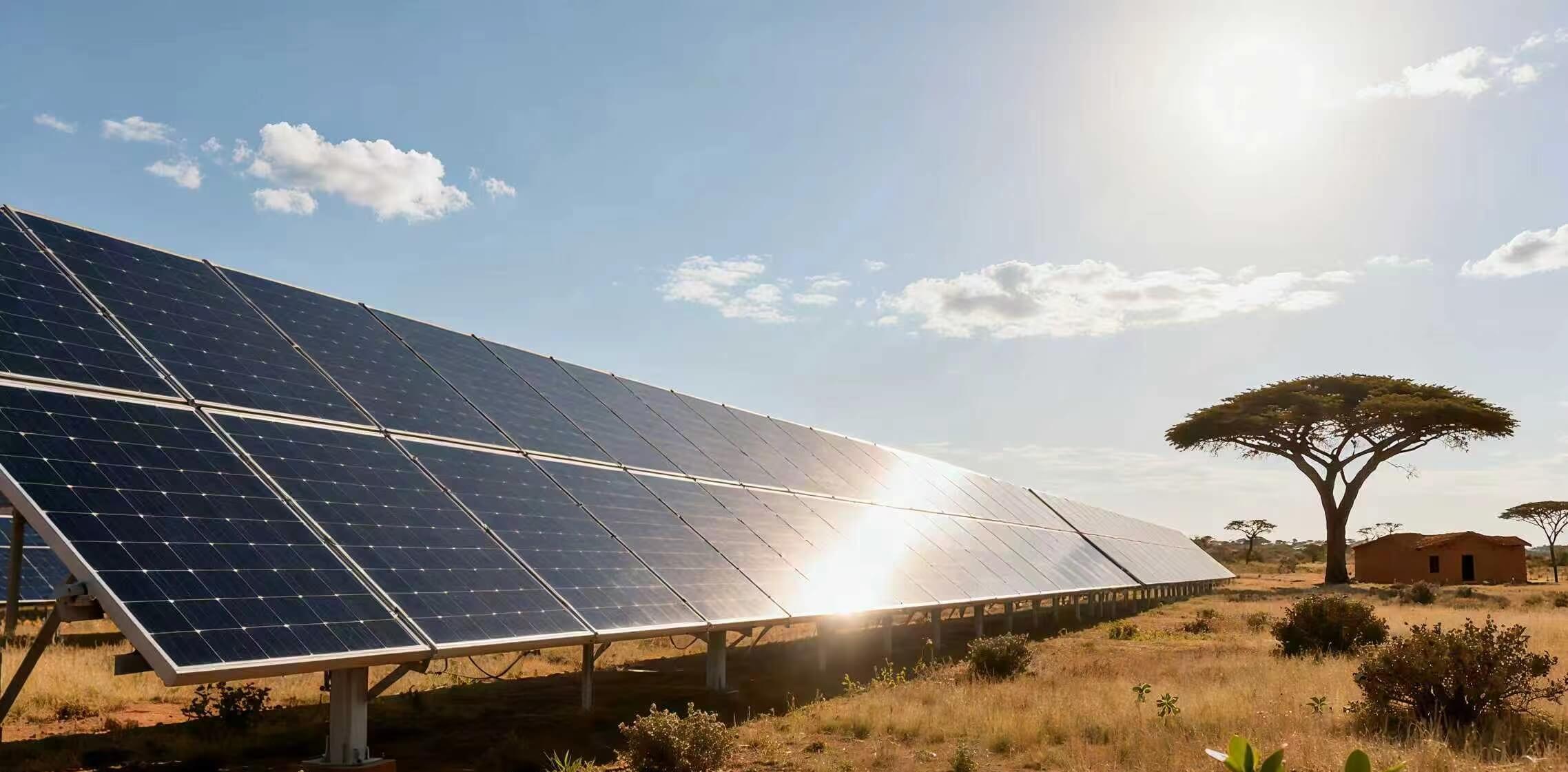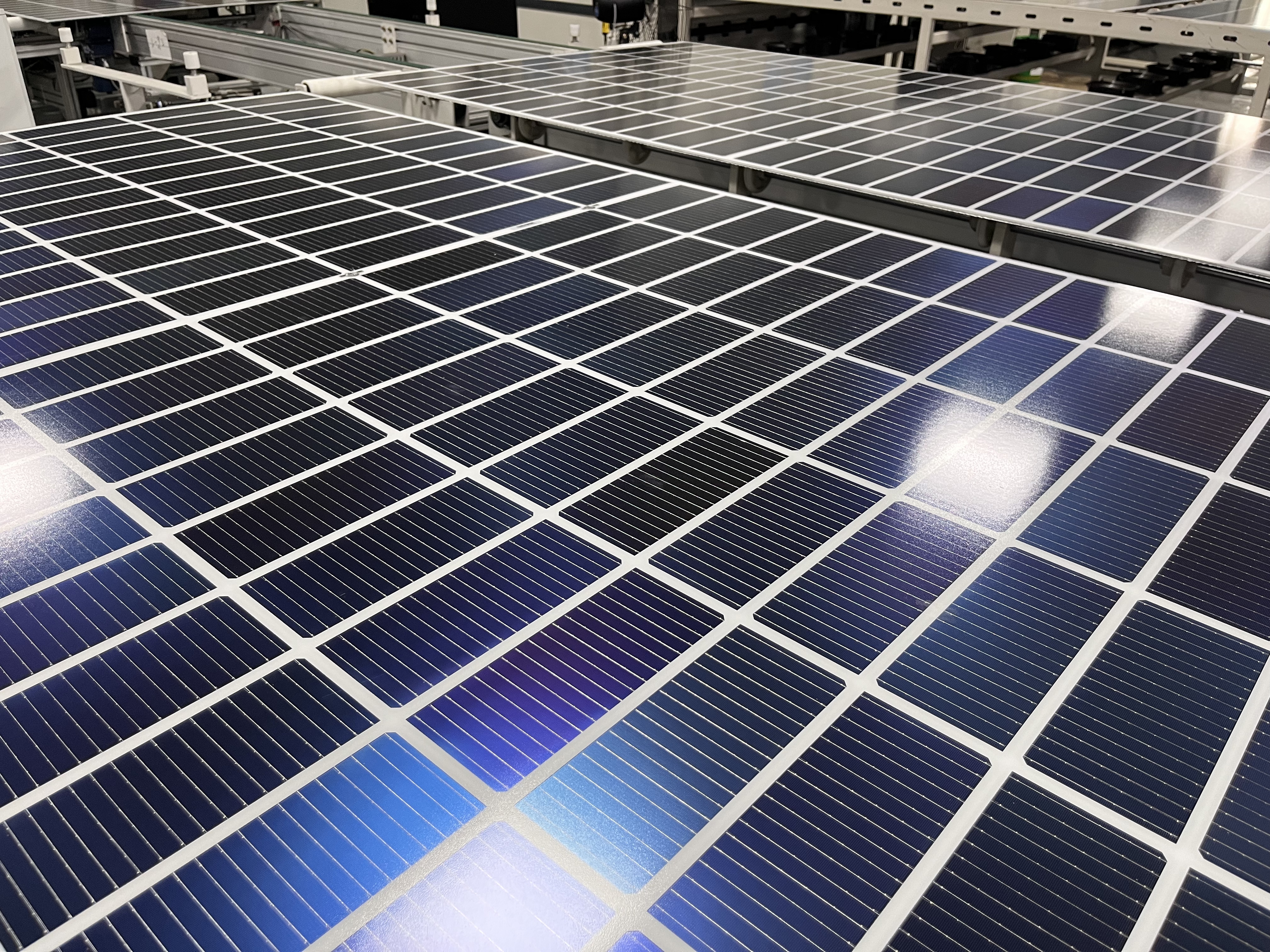Views: 0 Author: Site Editor Publish Time: 2025-10-21 Origin: Site
Amid the accelerating wave of renewable energy transition in Africa, high-quality core solar energy equipment serves as the foundation for project implementation and efficient operation. Established in 2012, Ocean Solar adheres to the mission of "creating higher commercial value for global customers". Its self-developed solar panel products meet the needs of the African market and provide crucial support for the regional energy transition. High-quality components from companies like Ocean Solar, along with the project layouts of the top 10 leading enterprises, are jointly driving the regional energy transformation. Starting from core equipment, this article systematically sorts out the pattern of Africa's solar energy market, the landscape of leading enterprises, and key industry dimensions.

Africa's unique natural environment imposes strict requirements on the efficiency, durability, and adaptability of solar panels. With over a decade of experience in the photovoltaic (PV) sector, Ocean Solar's products have obtained international authoritative certifications such as TUV and UL. Their technical features are highly aligned with the African market, making them the preferred components for numerous projects.
Centered on N-Type TOPCon technology, Ocean Solar has built a diversified solar panel product system for various scenarios:
High-Efficiency Power Series: Bifacial double-glass modules with power ranging from 700W to 750W have a conversion efficiency of 23.60% - 24.20%. They increase power generation by more than 20% per unit installed area, making them suitable for large-scale utility power plants in South Africa, Egypt, and other countries.
Adaptive Custom Series: Low-light efficiency-enhanced modules with power between 520W and 580W are adapted to the grassland environment in East Africa. Bifacial double-glass modules comply with the IEC/UL 1500V standard and can resist salt spray in West Africa and humid heat in Central Africa.
Economical Solution Series: Half-cell modules with power from 450W to 465W reduce the risk of hot spots, enhance temperature tolerance and mechanical load capacity, and are suitable for distributed and off-grid projects in Kenya and Tanzania.
Solar energy projects in Africa generally face the dual challenges of "cost reduction and efficiency improvement" and "environmental adaptation". Ocean Solar's product features accurately address these needs:
Lowering LCOE: High-conversion-efficiency components reduce the unit installed cost of large-scale power plants by 8% - 12% and shorten the investment payback period by 1-2 years, meeting Africa's economic demands.
Enhancing Operational Stability: Double-glass encapsulation and anti-corrosion design extend the component lifespan to 25-30 years, with a failure rate lower than the industry average, reducing O&M troubles in remote areas.
Covering Diverse Scenarios: From floating PV in Morocco (water and corrosion resistant) to rural off-grid projects in Kenya (cost-effective), the product matrix meets the needs of different regional scales.
The supply of high-quality components lays the foundation for the development of solar energy in Africa, while the region's own resource endowments and development needs constitute the core driving force for industry growth. Africa possesses over 60% of the world's high-quality solar irradiation resources. Meanwhile, it faces issues such as insufficient electricity penetration rate (less than 30% in some regions) and high dependence on traditional energy sources. Solar energy has thus become a core path to achieve the dual goals of "electricity popularization and carbon neutrality".
Covering Diverse Scenarios: It can meet urban electricity demand through utility-scale power plants and solve basic electricity problems in rural and remote communities (e.g., northern Kenya, rural Tanzania) via off-grid PV and microgrids.
Aligning with Development Needs: Projects have a short construction cycle (usually 6-12 months), which can quickly alleviate power shortages and align with the UN Sustainable Development Goals (SDGs).
Driving the Industrial Chain: It attracts supporting industries such as equipment manufacturing, O&M services, and investment and financing to settle locally, promoting the development of Africa's indigenous energy technology capabilities.

The following are the top 10 influential companies in Africa's solar energy sector. They also attach great importance to component selection and technical adaptability in their project implementation. This list is for reference only.
As an "early entrant" in Africa's solar energy sector, Scatec adopts a full-chain "development-construction-operation" model to layout benchmark projects. Its component selection focuses on efficiency and energy storage compatibility.
A subsidiary of FTSE 100 company SSE plc, SSE Renewables focuses on wind power. However, it has accelerated its layout in Africa's solar energy sector in recent years, concentrating on the East African and West African markets and preferring cost-effective components suitable for distributed scenarios.
As the UK branch of the global energy giant ENGIE Group, ENGIE UK's advantage in Africa lies in integrated solutions of "solar energy + energy storage + integrated energy services". Its component selection is deeply coordinated with energy storage systems.
A wholly-owned subsidiary of BP, Lightsource BP leverages its parent company's resources to focus on large-scale utility PV in Africa. Its component selection prioritizes ultimate efficiency.
Specializing in energy transition investment, Gresham House directs funds to assets that support decarbonization goals and the global transition to net-zero carbon emissions. It focuses on the stability of the component supply chain.
Aquila Capital provides customized fund instruments and investment solutions focused on sustainable development. Its component selection emphasizes economy and adaptability, with "small and flexible" projects as the main focus.
Mainstream leads in project reserves in Africa and holds an important position in the South African market. Its business covers solar and wind energy technologies, and its component selection balances efficiency and land use efficiency.
France's CDC is a long-term investor with government background. Its investments cover solar energy, wind energy, and infrastructure projects. Its African investments balance policy support and commercial returns, prioritizing internationally certified components to ensure long-term benefits.
Keppel integrates solar energy with real estate and infrastructure. Its component selection adapts to the needs of integrated projects, providing key infrastructure and services for clean energy, decarbonization, and sustainable urban renewal.
A seasoned independent power producer (IPP) focusing on development in Africa, Globeleq has a total installed capacity of 3,670.5 MW across 22 projects in South Africa, Tanzania, Kenya, and other countries. Its component selection emphasizes O&M convenience, and local employees account for over 90%.
The layout of leading enterprises guides the market direction. Africa's solar energy industry requires further analysis of key dimensions such as regional distribution, social impacts, and policy challenges.
South Africa: It has the most mature policies, with projects mainly focusing on large-scale utility PV. The demand for components is concentrated on high-power TOPCon products. However, its grid connection capacity is nearly saturated, and new projects require supporting grid upgrades.
Egypt: The Benban Park has formed a scale effect and has strong appeal to international capital. Nevertheless, it has long approval cycles, and the solar panel import rate exceeds 90%.
Kenya: It leads in distributed off-grid PV, with component demand mainly for products below 550W. However, low electricity prices result in limited profit margins.
Off-grid PV has provided basic electricity to over 200 million people without electricity in Africa. For example, among off-grid users in Kenya, approximately 92% use PV for lighting, 75% for mobile phone charging, and 25% for small-scale agricultural processing (e.g., grain threshing).
In addition, in rural Tanzania, clinics powered by PV can realize vaccine refrigeration and emergency services at night, while schools can carry out e-learning, improving the quality of public services.
A 50MW project creates 300-500 temporary jobs during the construction phase and requires 50-80 local O&M personnel during the operation phase.
Sixty percent of leading companies provide O&M training. Enterprises like Globeleq cooperate with colleges and universities to establish a "Solar Energy Technology Major" to cultivate local talents.
Policy Promotion: South Africa and Egypt require new utility-scale PV projects to be equipped with energy storage with a capacity of at least 15%. It is expected that starting from 2026, the energy storage ratio of new PV projects in Africa will generally reach over 20%.
Technical Routes: Lithium-ion battery energy storage is the mainstay, and some projects adopt molten salt energy storage to achieve long-duration energy storage.
Business Model Innovation: The "PV subscription system" has emerged in Kenya and Ghana. Users do not need upfront investment and can use PV power by paying monthly subscription fees, lowering the access threshold.
Application Scenario Expansion: It extends from households and commercial buildings to agriculture (e.g., PV-powered irrigation) and mining (e.g., off-grid power supply for mines), expanding the market space.
Africa's solar energy industry is in a stage of "rapid growth but in need of breaking bottlenecks". High-quality components are the foundation—Ocean Solar provides adaptive solutions through technological innovation, the top 10 leading enterprises dominate utility projects, and distributed off-grid PV becomes the main focus for small and medium-sized enterprises. The next five years will witness three major trends:
Regional Balance: The proportion of projects in potential regions of West Africa and East Africa will increase, gradually changing the pattern of "market monopoly by South Africa and Egypt". The demand for components adapted to different environments will continue to grow.
Technological Integration: "Solar energy + energy storage + microgrids" will become the standard configuration. Some projects will integrate green hydrogen and electric vehicle charging to form integrated energy systems, requiring components to be deeply coordinated with multi-energy systems.
Capital Diversification: The participation of local capital (e.g., African sovereign funds) and private equity (PE) will increase, gradually reducing reliance on international multilateral institutions. Equipment procurement will pay more attention to cost-effectiveness and localized services.
If you need to adjust the translation style (e.g., more concise for academic use or more vivid for promotional materials) or add annotations for key technical terms, let me know. I can also help you sort out a bilingual glossary of core terms in this document for easier reference.
Note: The author has tried his best to ensure the accuracy of the content above, but omissions are inevitable. Please contact ocean solar directly for consultation.
TOPCon Solar Panels: Why They’re the Hottest 2025 Solar Trend
Solar Panels vs. Solar Shingles: Which Is Better for Your Home?
How Long Do Solar Panels Last? Decoding Degradation and Key Lifespan Factors
Top 7 Solar Panel Manufacturers in Germany You Should Know in 2025
TOP solar panel manufacturers in thailand you should know in 2025
TOP 5 solar panel manufacturers in vietnam you should know in 2025